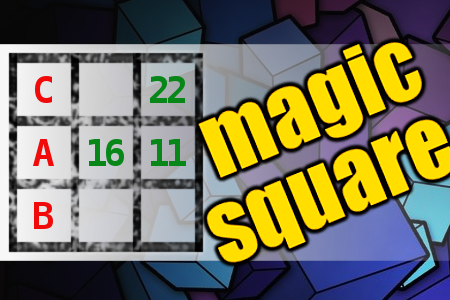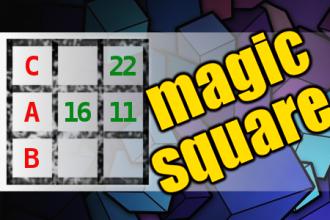MAGIC SQUARE: Calculate A*B+C
The aim is to place the some numbers from the list (10, 11, 12, 15, 16, 18, 22, 23, 24, 30, 35, 53) into the empty squares and squares marked with A, B an C. Sum of each row and column should be equal. All the numbers of the magic square must be different. Find values for A, B, and C. Solution is A*B+C.Correct answers: 17
The first user who solved this task is Nílton Corrêa De Sousa.
#brainteasers #math #magicsquare

Jon left for a two day busines...
Jon left for a two day business trip to Chicago. He was only a few blocks away from his house when he realized he'd left his plane ticket on top of his dresser. He turned around and headed back to the house. He quietly entered the door, walked into the kitchen. He saw his wife washing the breakfast dishes, wearing her skimpiest negligee.
She looked so good that he tiptoed up behind her, reached out, and squeezed her left tit.
"Leave only one quart of milk," she said. "Jon won't be here for breakfast tomorrow."
She looked so good that he tiptoed up behind her, reached out, and squeezed her left tit.
"Leave only one quart of milk," she said. "Jon won't be here for breakfast tomorrow."

